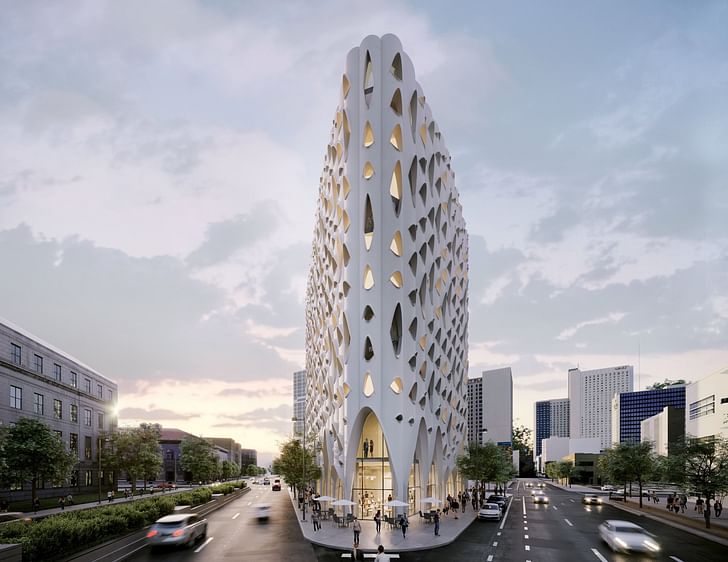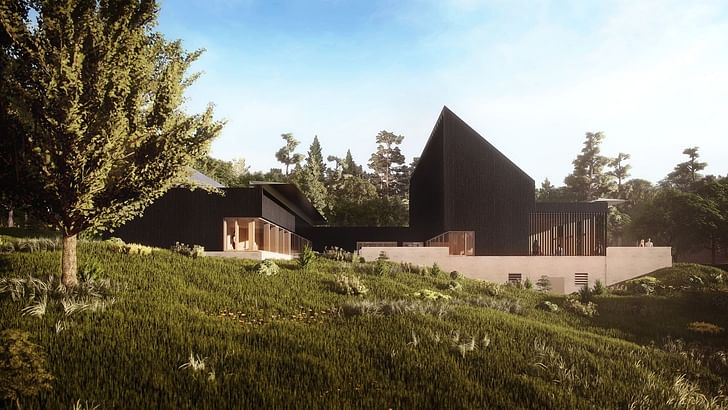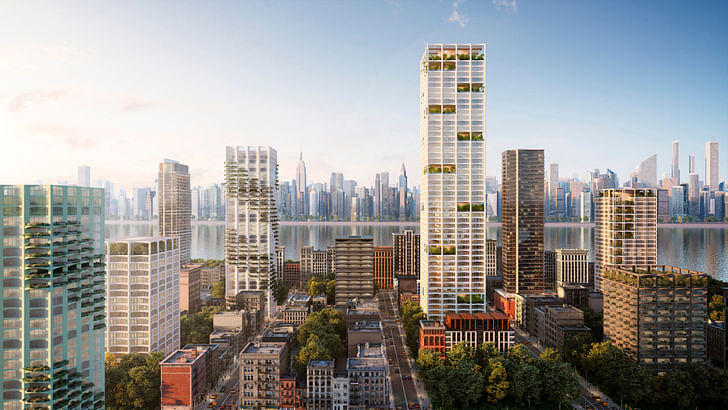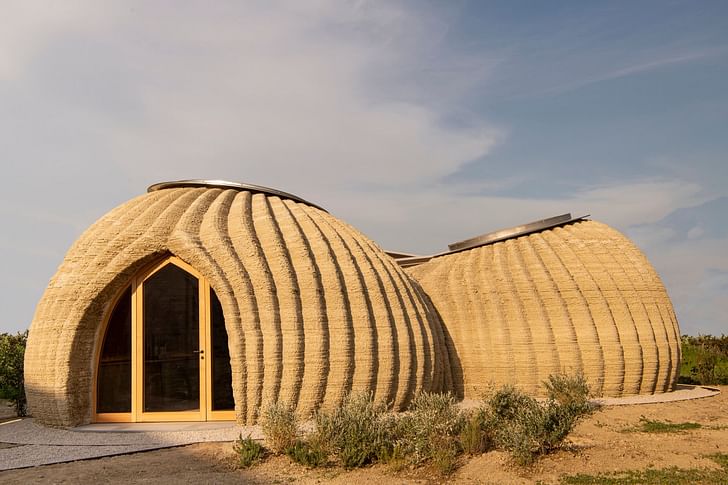

For the first time, the US government has issued a definition of a 'zero emission building.' While the effort to define a 'zero emission building' is both timely and commendable given the proliferation of unverified titles such as 'net zero' and 'carbon positive' in the AEC sector, shortfalls in the new definition may have unintended consequences.
On June 6, 2024, the United States Department of Energy (DOE) published the first ‘National Definition of a Zero Emissions Building.’ According to the DOE, a building is regarded as ‘zero emissions’ if it “is highly energy efficient, does not emit greenhouse gases directly from energy use, and is powered by clean energy.” The effort to arrive at such a definition had been ongoing for months, with Archinect reporting on both the release of a draft definition in February and a letter supporting the effort signed by 69 AEC firms in January.
As it currently stands, this definition is problematic, for reasons which will be elaborated upon later in this article. The overall mission, however, to establish a common standard under which a building either is or is not a ‘zero emissions building,’ is worthwhile and timely.
As public awareness and unease over climate change has risen, so too has the number of architects and developers claiming to have designed buildings that are ‘net zero,’ ‘near-net zero,’ ‘carbon negative,’ and so on. Reporting on some of these claims, I have seen first-hand how designers and developers of different buildings have used the same phrases to mean different things.

In late 2023, when the AIA published new data on their 2030 Commitment, the term ‘net zero’ was used in the context of energy use rather than whole-life carbon emissions, while earlier that year, a rural timber research center and 10-story urban tower, both in Toronto, promised to be ‘net zero carbon.’ In 2022, Studio Gang announced they had begun construction on the ‘first carbon-positive hotel in the US’ while in 2021, SOM unveiled a vision for ‘beyond net zero’ towers that they claim will absorb more than 300% of the amount of carbon emitted during their construction and operation.
The architectural and mainstream media do not possess the data nor expertise to independently verify whether or not each of these buildings will live up to their promises, or whether or not their use of environmental terms is misleading. This disconnect between claims and reality is crying out for a standardized, credentialed, legal definition of what a ‘net zero’ or ‘zero emissions’ building is, alongside clear assessment criteria. Without such definitions, our industry will continue to serve as a ‘Wild West’ with designers and developers making big claims based on unverifiable, narrow, potentially misleading grounds.

In Europe, legislative action has already been taken. In January 2024, the European Union’s parliament, which passes laws to be adopted by all 27 EU member states, adopted a new law banning greenwashing and misleading environmental product information. Under the law, only sustainability labels based on approved certification schemes or established public authorities will be allowed. Crucially, terms such as ‘climate neutral’ or ‘climate positive’ that rely on offsetting emissions will be banned.
The new DOE definition of a ‘zero emissions building’ is not only devoid of regulatory power; it is also a weak definition
Unlike the recent US DOE definition, the new EU law has teeth. All 27 EU member states have two years to pass their own national laws to ensure they are in compliance with the EU-wide law, meaning the measures outlined above will come to fruition across Europe by 2026. By contrast, the ‘zero emissions building’ definition issued by the US DOE is described as ‘implementation guidance,’ rather than an enforceable standard.
“This implementation guidance can be adopted by public and private entitites to provide the minimum criteria that a building in their jurisdiction or under their jurisdiction or under their control should meet in order for the building to qualify as a zero-emissions building for operational energy use,” the document reads. “This definition is not a regulatory standard. This definition is guidance that can be adopted by public and private entities.”
The new DOE definition of a ‘zero emissions building’ is not only devoid of regulatory power; it is also a weak definition. Beneath the headline ‘National Definition of a Zero Emissions Building’ comes the subtitle ‘Part 1: Operational Emissions from Energy Use,’ meaning the definition is preoccupied only with the carbon emissions generated from energy production after a building is completed. Even within this narrow definition, a major caveat exists in the criteria “free of on-site emissions from energy use,” meaning a building may be labeled ‘Zero Emissions’ despite the presence of off-site emissions.

More alarming is the absence of embodied carbon in the definition. According to the World Green Building Council, buildings are currently responsible for 39% of global energy-related carbon emissions: 28% from operational emissions and 11% from embodied carbon emissions generated before a building is completed. Despite the significant share of emissions that are attributed to embodied carbon, such emissions are ignored in the current DOE definition criteria.
“Part 1 of the Definition sets criteria for a building with zero operational emissions from energy use,” the document reads by way of an explanation. “Reducing a building’s total life cycle emissions to zero also requires minimizing its embodied carbon, minimizing the impacts of refrigerants, and attending to other considerations that fall outside of the scope of operational emissions. Future parts of the Definition may address these matters.”
The significant loopholes and omissions within the current incomplete definition may in fact have the opposite effect
It is unclear why the DOE did not include embodied carbon in its initial definition. With California soon set to become the first US state to mandate embodied carbon reduction measures for select building types, the AEC sector demonstrably possesses the means to calculate embodied carbon emissions in design proposals, making the absence of embodied carbon from the DOE definition more inexcusable. In the meantime, the promise that a future definition “may” address such matters, rather than “will” address such matters, does not give cause for optimism.
Hopes may have been raised that the DOE definition will help to combat the misuse of the label ‘zero-emission building.’ However, the significant loopholes and omissions within the current incomplete definition may, in fact, have the opposite effect. Buildings with high embodied carbon levels and/or high levels of off-site emissions from operational energy use, which have no business claiming to be true green buildings, may now proudly declare themselves “a zero-emission building according to the US government’s definition.”

For any product to misrepresent itself as green, eco-friendly, or zero-emission runs the risk of misleading the public, consumers, and investors. For buildings, the stakes are higher. With buildings responsible for almost 40% of global energy-related greenhouse gas emissions, false claims within the AEC sector carry heavier consequences for the environment than most other products.
If Marshall McLuhan is correct, and the medium truly is the message, architecture should be one of the most powerful media through which civilization can be offered a dose of reality on the climate crisis
Moreover, a building misleadingly claiming to be ‘zero emissions’ runs the risk of deceiving both the wider AEC industry and the public on the scale of change needed within the built environment to combat climate change. For a public who would rightfully expect a ‘zero-emission building’ to be one whose design, construction, operation, and demolition has not resulted in a net gain in greenhouse gas emissions, the optics of a conventionally delivered building being described as ‘zero-emissions’ through a much weaker definition gives a false reading of humanity’s progress in reducing emissions.
If Marshall McLuhan is correct, and the medium truly is the message, architecture should be one of the most powerful media through which civilization can be offered a dose of reality on the climate crisis. Let’s begin by not mislabeling the dosage.
Niall Patrick Walsh is an architect and journalist, living in Belfast, Ireland. He writes feature articles for Archinect and leads the Archinect In-Depth series. He is also a licensed architect in the UK and Ireland, having previously worked at BDP, one of the largest design + ...
1 Comment
If we're serious about climate change, place growth limits on towns and cities. Stop building sprawl and incentivize transit oriented development or better yet, re-development. If we turn some sprawl into walkable places while abadoning others to allow nature's ecosystems to heal, we can build a sustainable future.
Block this user
Are you sure you want to block this user and hide all related comments throughout the site?
Archinect
This is your first comment on Archinect. Your comment will be visible once approved.